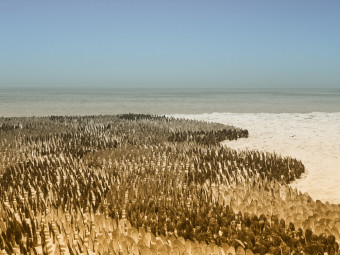How Goans celebrate this heart-warming festival
One of the most important festivals in Goa is upon us. Ganesh Chaturthi, also known as ‘Vinayak Chaturthi’, is a time when homes and villages throughout our state are awash in feelings of joy and spirituality. The high spirited character of this holiday is so peculiar and filled with rituals that you can feel the festive vibe in the air even before the holiday begins.
It’s hard to overstate the importance of this festival in Indian Hindu society – the birthday of the fascinating elephant god ‘Ganesh’. Ganesh himself is one of the most recognizable Hindu Gods, with his legendary tales passed on from generation to generation – keeping alive our heritage and culture.
One of the most famous legends about his birth holds that Ganesh was brought to life by Parvati, who breathed life into him after making him from clay. She made him just before she went for a bath and he was kept outside to keep guard. Ganesh protected his mother from anybody who tried to enter, including Lord Shiva himself, which eventually cost Ganesh his head. This upset Parvati, of course, and Shiva promised to bring Ganesh back to life. But as Shiva couldn’t find a human head, he placed an elephant head on the human and brought Ganesh to life.
And thus lord Ganesh as we know him was born.
Ganesh Chaturthi in Goa is arguably the biggest festival for Hindus in the state, and its vibe so harmonious and communal, that people from all religions are invited to come over to one’s home and participate, usually a friendly Hindu neighbour, at the least to receive ‘Prasad’.
The rituals typically include a family home getting a clay idol of Ganesh, which they keep in a ‘Pandal’, a home for the idol decorated by the family, for at least a day before he’s taken to the sea for ‘Visarjan’, the immersion of the Ganesh idol.
The idol is worshiped, celebrated and prayed before it is taken for the Visarjan. During its stay, the energy in a typical home is very cheerful and festive, with families hosting a Ganesh idol getting visitors throughout the day.
Cleaning of the house and cooking rich traditional food is another characteristic of the festival, the food differing from one place to another. It’s also traditional for families hosting a Ganesh to visit other families hosting Ganesh, mostly neighbors and relatives. In this way, the festival serves as an annual forum for family reunions.
The celebrations typically last anywhere from around 1 – 10 days before the final process of the ritual, the Visarjan, is performed.
Then the idol is immersed in a water body, be it a stream, the sea, a lake or a river. In Panjim the most famous spot is Miramar beach , where most Visarjans from Goa’s capital city occur. The water body used for immersion of the idol is mostly considered by geographical convenience.
The Visarjan procession is taken to the streets, where people dance and sing joyously to say final goodbyes to their idol, mostly singing ‘Bhajans’, traditional religious songs praising the God Ganesh. The most common duration of hosting the idols is 1, 3 and 11 days, while some people even keep it on for 21 days.
The festival holds the spirit of an older simpler time, and is sacred to many people, both young and old. The family togetherness of this celebration make it particularly special, infusing the festival with a deep sense of harmony and love.




